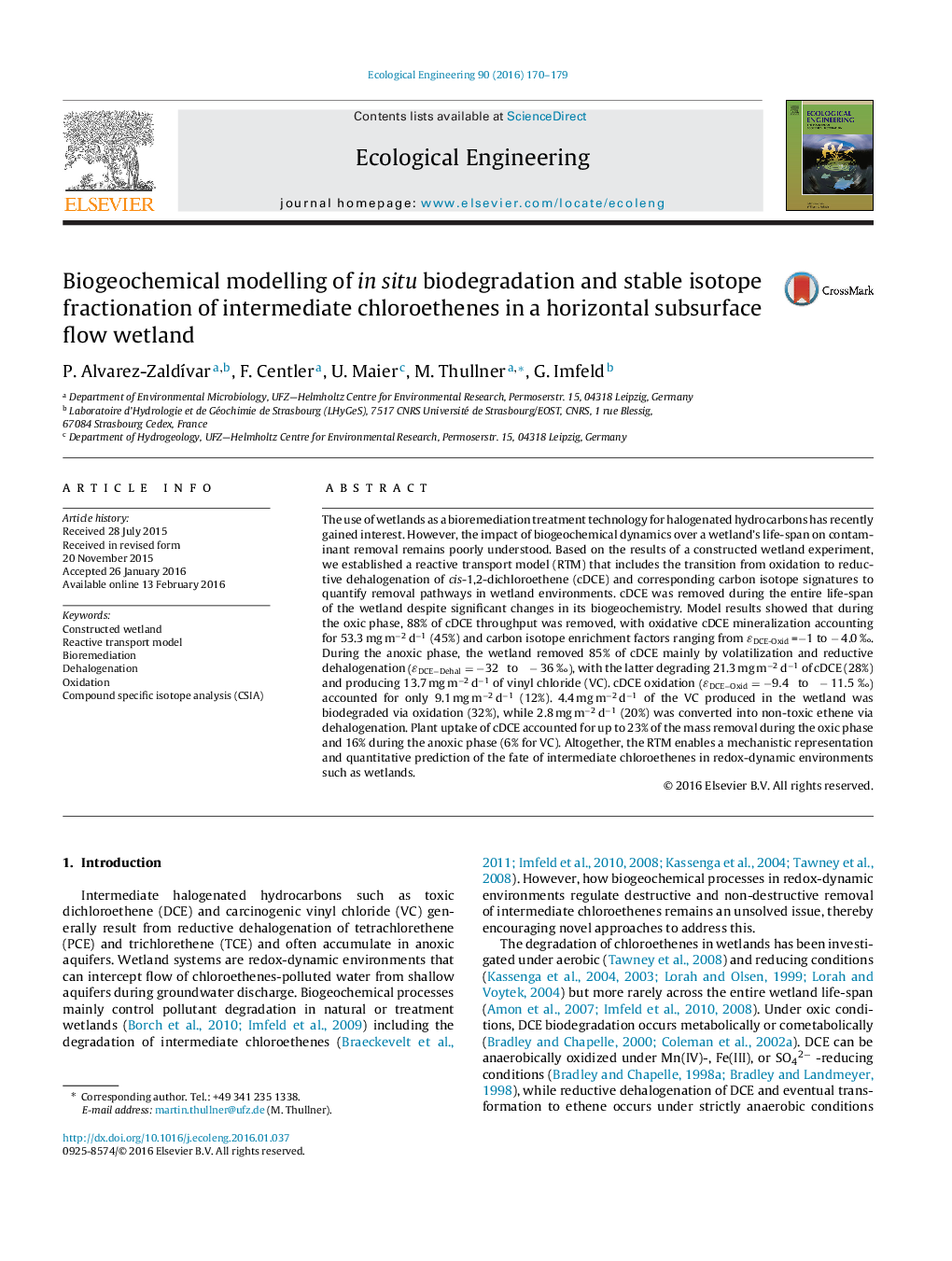| کد مقاله | کد نشریه | سال انتشار | مقاله انگلیسی | نسخه تمام متن |
|---|---|---|---|---|
| 4388660 | 1618009 | 2016 | 10 صفحه PDF | دانلود رایگان |
The use of wetlands as a bioremediation treatment technology for halogenated hydrocarbons has recently gained interest. However, the impact of biogeochemical dynamics over a wetland's life-span on contaminant removal remains poorly understood. Based on the results of a constructed wetland experiment, we established a reactive transport model (RTM) that includes the transition from oxidation to reductive dehalogenation of cis-1,2-dichloroethene (cDCE) and corresponding carbon isotope signatures to quantify removal pathways in wetland environments. cDCE was removed during the entire life-span of the wetland despite significant changes in its biogeochemistry. Model results showed that during the oxic phase, 88% of cDCE throughput was removed, with oxidative cDCE mineralization accounting for 53.3 mg m−2 d−1 (45%) and carbon isotope enrichment factors ranging from ɛDCE-Oxid =−1 to − 4.0 ‰. During the anoxic phase, the wetland removed 85% of cDCE mainly by volatilization and reductive dehalogenation (εDCE−Dehal=−32 to −36‰)εDCE−Dehal=−32 to −36‰, with the latter degrading 21.3 mg m−2 d−1 of cDCE (28%) and producing 13.7 mg m−2 d−1 of vinyl chloride (VC). cDCE oxidation (εDCE-Oxid=−9.4 to −11.5‰)εDCE-Oxid=−9.4 to −11.5‰ accounted for only 9.1 mg m−2 d−1 (12%). 4.4 mg m−2 d−1 of the VC produced in the wetland was biodegraded via oxidation (32%), while 2.8 mg m−2 d−1 (20%) was converted into non-toxic ethene via dehalogenation. Plant uptake of cDCE accounted for up to 23% of the mass removal during the oxic phase and 16% during the anoxic phase (6% for VC). Altogether, the RTM enables a mechanistic representation and quantitative prediction of the fate of intermediate chloroethenes in redox-dynamic environments such as wetlands.
Figure optionsDownload as PowerPoint slide
Journal: Ecological Engineering - Volume 90, May 2016, Pages 170–179
